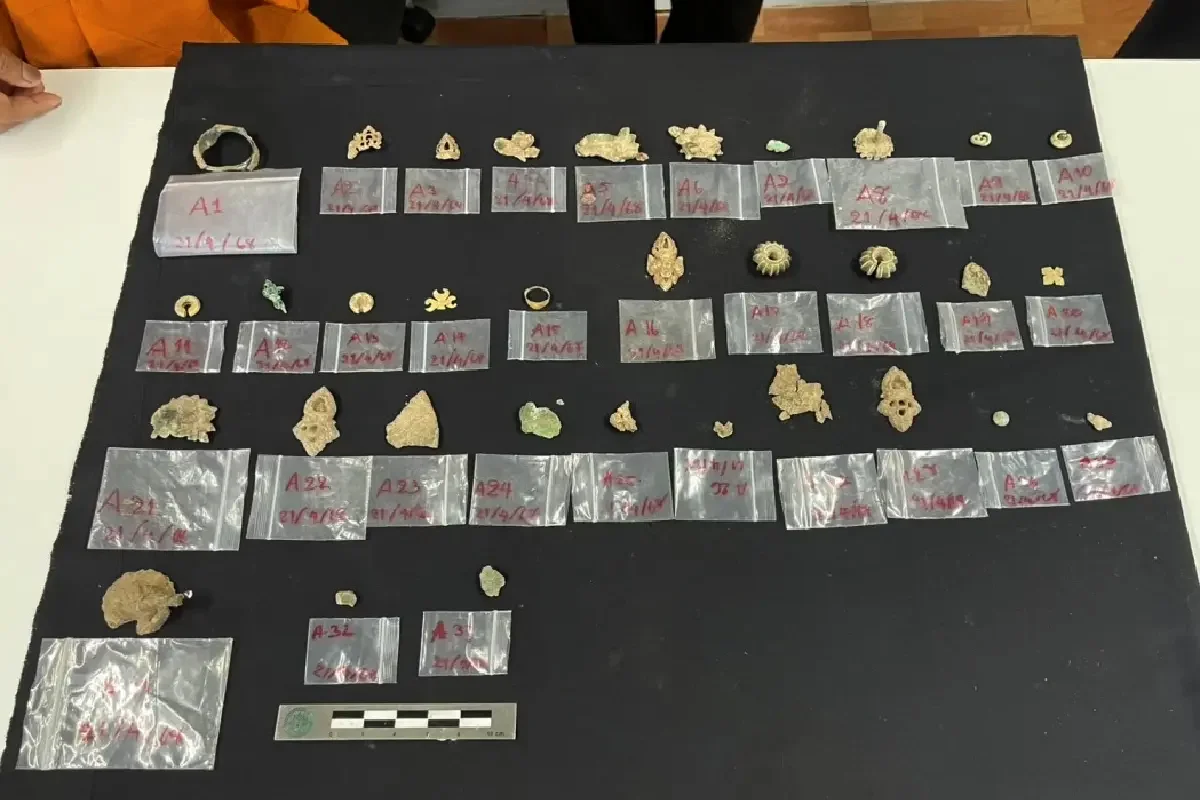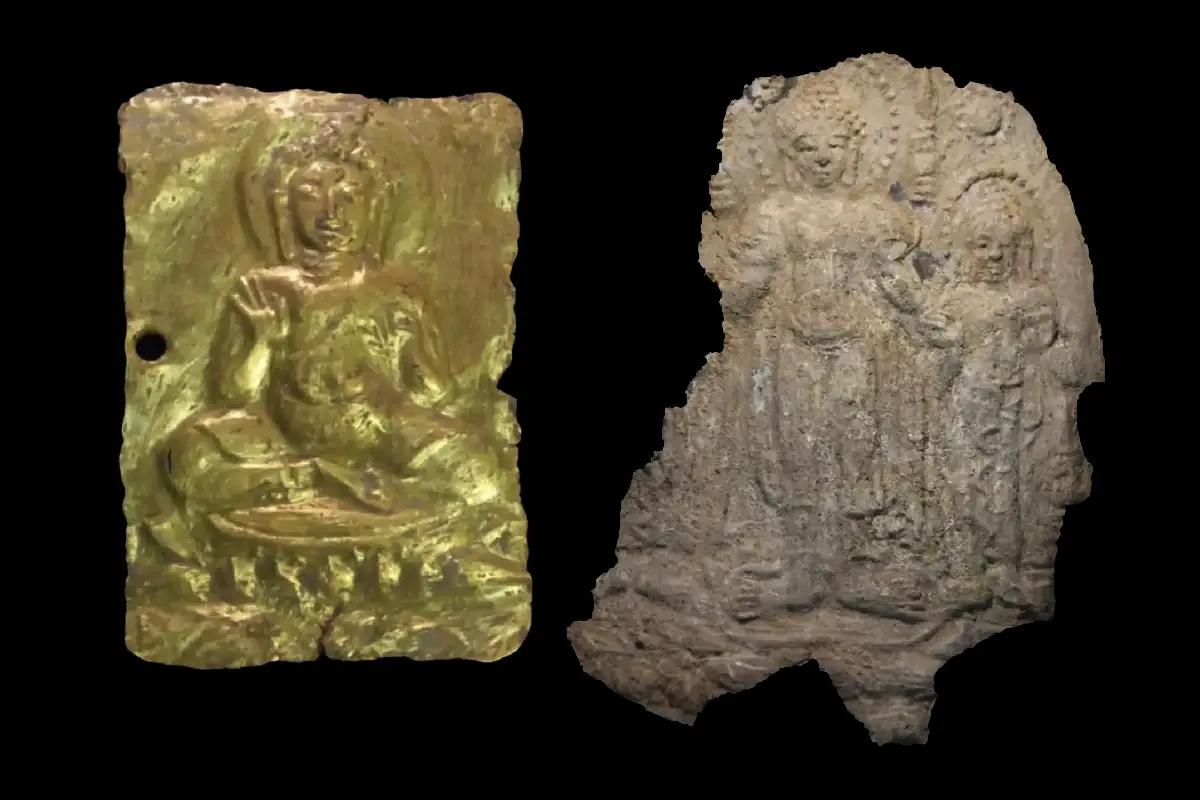The Fine Arts Department in Thailand has announced the discovery of a collection of ancient relics at the Wat Thammachak Sema Ram temple complex in Sung Noen District, northeastern Thailand.
Wat Thammachak Sema Ram, also known as Wat Dhammachaksemaram, has served as a major Buddhist site since the Dvaravati state period, a Buddhist kingdom from the 6th to the 11th century AD.
Among the temple’s most important monuments is a reclining Buddha statue, believed to have been created around AD 657 during the reign of Ramaraj, king of Ramburi (possibly the Ayodhyapura archaeological site).
Recent structural work aimed at preserving the reclining Buddha statue has led to the discovery of a clay vessel buried at a depth of 1.3 metres. A closer examination by archaeologists found that the vessel contained 33 objects crafted from a mix of gold, silver, and bronze.

Among the objects are gold rings, silver earrings, uniquely shaped bronze accessories, and spiral hoop earrings that correspond with similar finds from the Phu Khao Thong site in Ranong Province and the Tha Chana site in Surat Thani.
Excavations also uncovered an ornate embossed plate crafted from a lead-tin alloy. Measuring 8 centimetres in width and 12.5 centimetres in height, the plate features a seated Buddha, cross-legged on a lotus pedestal and performing the Vitarka Mudra—a symbolic hand gesture signifying the transmission of spiritual teachings and wisdom.
In addition, a damaged relief was unearthed depicting a standing Buddha as the central figure. Clad in a flowing robe and performing the Vitarka Mudra with both hands, the Buddha is flanked by two attendant figures. One of the figures is believed to represent Phra Phrom, the Thai manifestation of the Hindu god Brahma, revered as the creator in Hindu cosmology.
Experts are currently assessing the historical significance of the finds. The discovery not only enhances understanding of early Thai religious artistry but also offers clues into regional craftsmanship, iconography, and long-distance cultural influences across ancient Southeast Asia.
Header Image Credit : The Fine Arts Department
Sources : The Fine Arts Department







